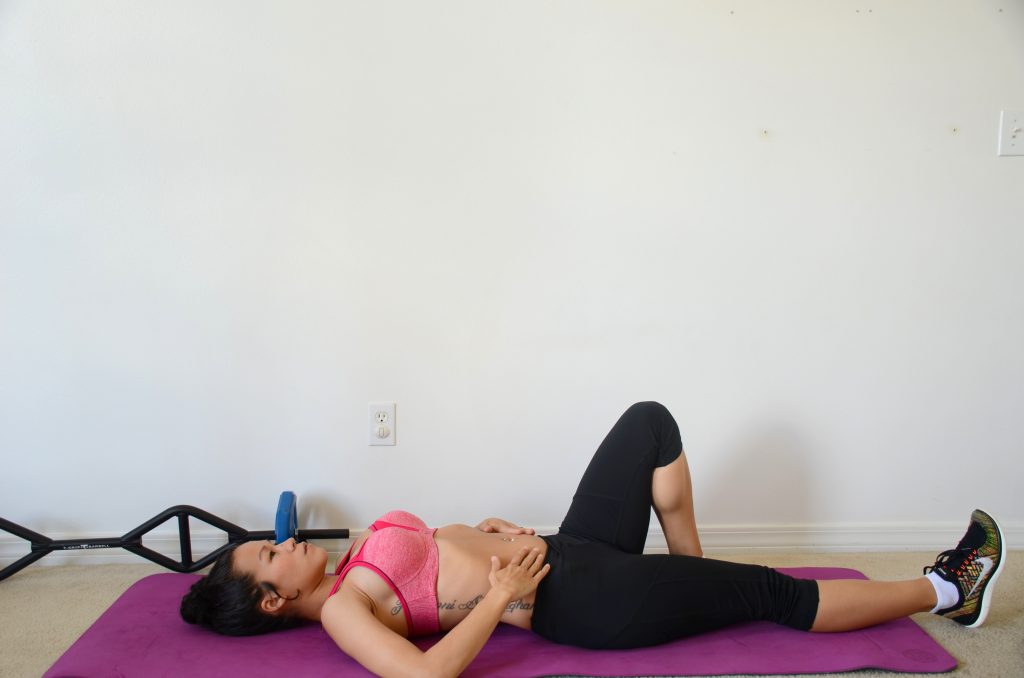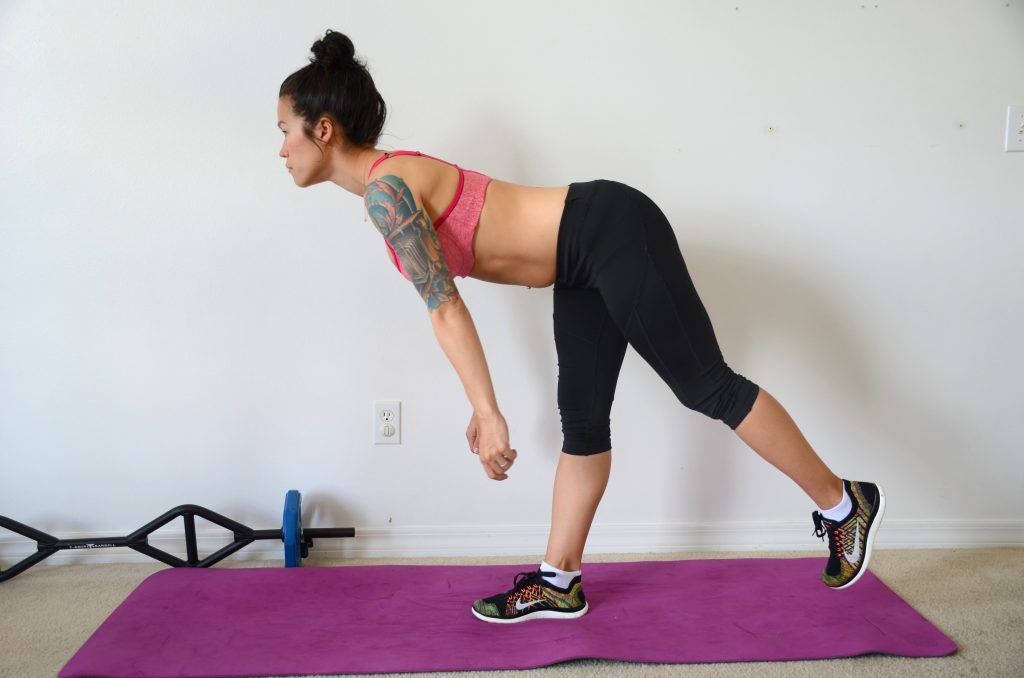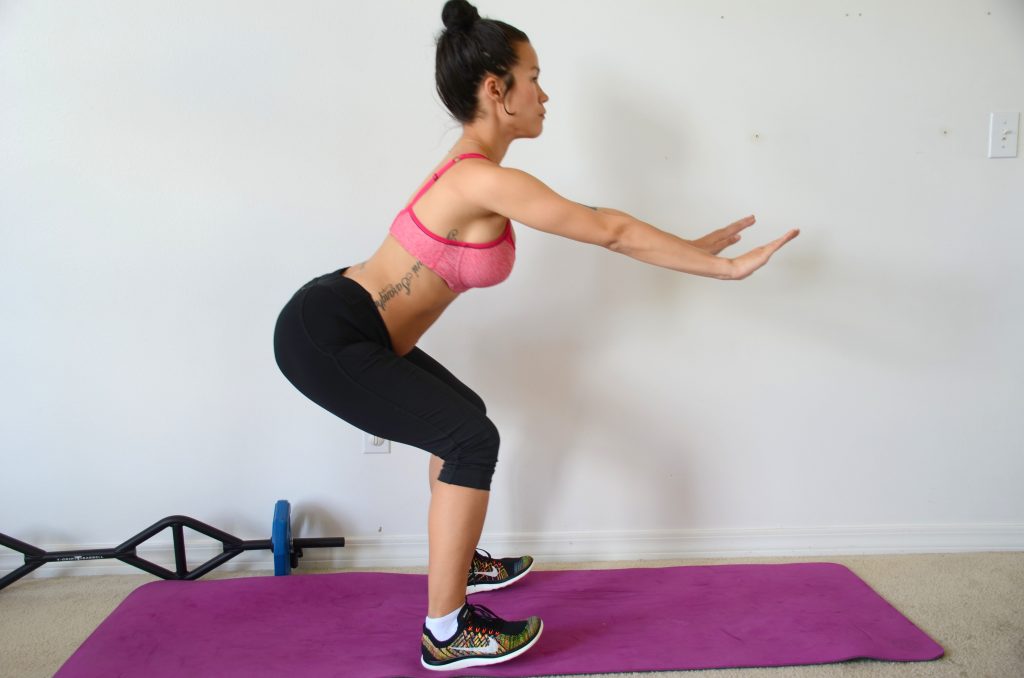
The Complete Guide to Getting Rid of Diastasis Recti
Did you just give birth recently and you still look pregnant with a noticeable pooch? You might have a common, painless condition called Diastasis Recti. Diastasis recti is a thinning of the tissue that connects the two sides of the rectus abdominis. When this tissue thins, it gravitates away from each other which causes your midsection to buldge on through as your two abdominal halves split apart.
Think of your ab muscles being held together by a zipper. When you have Diastasis Recti the zipper splits in the middle and the two sides are separated.
What are the signs of DA?
- A doming or buldging right around the belly button.
- A gap of two finger widths or more.
Please keep in mind that the gap may run anywhere down your linea alba or abdominal midline.
Who’s prone to DA?
- Overweight individuals carrying most of their weight in their abdomen.
- Those who perform exercises incorrectly or with bad posture.
- Women who are pregnant.
- Women who gain more than the recommended amount of weight during pregnancy.
- Women with multiple pregnancies or whose pregnancies are spaced closer together.
- Women who are pregnant with more than one fetus at once (twins, triplets, etc).
- Women over the age of 35.
How do I know if I have DA?
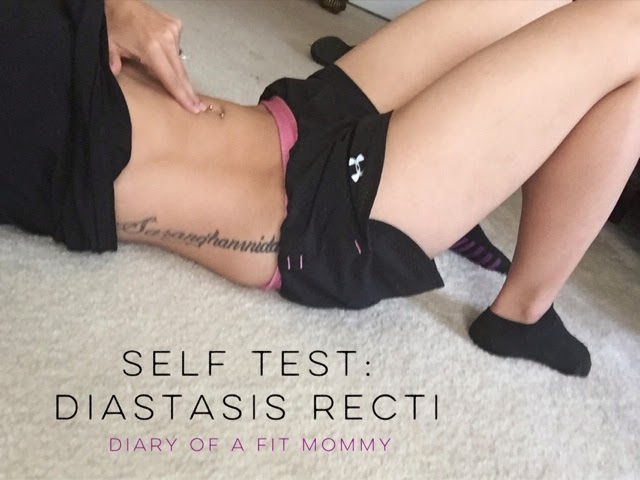
This simple self-test will help you determine if you have diastasis recti:
- Lie on your back with your knees bent upward, as if you are in the starting position for a crunch exercise.
- Place your fingers right above your belly button.
- Raise your head and shoulders off floor as if you are performing a crunch exercise.
- If you can feel a gap or see a buldging, then you could have a diastasis.
Exercises to Heal Diastasis Recti
Heel Drops
Lie on your back and lift the knees over the hips. It’s very important to make sure the knees do not come any close to the chest. Use those hip flexors to stabilize! Place your hands on your tummy or at your sides, wherever it’s comfortable
Drop on foot down to the floor and tap your toes. Immediately lift the leg up again as the other leg comes down and taps. Use quick exhales to help you. Keep your back to the mat at all times. Modification: Come to your elbows
Heel Slides
Place your finger tips just inside your pelvic bones. Maintain your neutral spine. Activate the muscles under your finger tips by pretending to zip up a tight pair of jeans. Your pelvis should maintain this same position as you straighten one leg, return to start, and repeat on the opposite side. Repeat 10 times maintaining the same position.
Single Leg Deadlift
Keeping that knee slightly bent, perform a stiff-legged deadlift by bending at the hip, extending your free leg behind you for balance. Continue lowering the kettlebell until you are parallel to the ground, and then return to the upright position.
Side Plank
Lie on side on mat. Place forearm on mat under shoulder perpendicular to body. Place upper leg directly on top of lower leg and straighten knees and hips. Raise body upward by straightening waist so body is ridged. Hold position. Repeat with opposite side.
Abdominal Breathing
Lay on your back, knees bent, with the arch of your back pressed against the ground (you want a flat spine). Place your hand on your belly and take a deep breath, trying to expand your abdominal muscles to push your hand up and away from the floor. As you exhaled, contract your abdominal muscles and pull your belly button towards your spine. This “pulling your belly button towards the ground” action is the foundation for all of the other exercises to follow. You can do this simple exercise in repetitions of ten several times throughout the day until you feel that you have a good grasp on the technique.
Pelvic Tilts
Lay on your back with your knees bent. This time curl your hips towards your ribcage while engaging your abs and pressing your lower back into the ground.
Bodyweight Squats/Wall Sits
The Diastasis Recti Workout Plan
Day 1:
3 Rounds:
- Wall sit x 30 seconds
- Pelvic Tilts x 15
- Single Leg Deadlifts x 10 per leg
- Side plank x 10 seconds per side
- Heel Slides x 10 per heel
- Heel Drops x 10 per heel
- Bodyweight Squats x 10
Day 2:
Brisk walking – 20 minutes
Abdominal Breathing – 5 minutes
Day 3:
3 Rounds:
- Wall sit x 45 seconds
- Pelvic Tilts x 20
- Single Leg Deadlifts x 20 per leg
- Side plank x 20 seconds per side
- Heel Slides x 20 per heel
- Heel Drops x 20 per heel
- Bodyweight Squats x 20
Day 4:
Brisk walking – 30 minutes
Abdominal Breathing – 10 minutes
Day 5:
3 Rounds:
- Wall sit x 60 seconds
- Pelvic Tilts x 30
- Single Leg Deadlifts x 30 per leg
- Side plank x 30 seconds per side
- Heel Slides x 30 per heel
- Heel Drops x 30 per heel
- Bodyweight Squats x 30
Day 6:
Brisk walking – 20 minutes
Abdominal Breathing – 5 minutes
Day 7:
REST
Moves to Avoid for Diastasis Recti

Any moves that cause the abs to bulge away from the body (put your hand on your stomach while doing a crunch to feel it for yourself) can worsen your DA by putting extra pressure on those weak muscles causing them to split even further.
Here are some common “no-no” moves for avoiding them attempting to treat and heal Diastassi Recti. Once your diastasis is healed, these exercises can be added back into your routine, but it is important to avoid them while rebuilding your foundational.
Moves to avoid when healing DA are:
- crunches
- some quadruped exercises
- frontal planks
- sit ups
- oblique twists
- Russian twists
- push ups
Wearing an Abdominal Binder or Girdle to Heal Diastasis Recti
My favorite postpartum girdle is the B.F.F. from Belly Bandit. The reason for wearing one of these magical things is the main fact that it helps to shrink your belly after giving birth. No, I am serious! You wear it immediately after giving birth (I strapped mine on at the hospital within two hours) and it helps to shrink your uterus back down to its original size-sometimes even smaller! However, it is NOT a waist trainer so DO NOT WORRY. It is much gentler and doctors actually recommend them. So what can it do for DA, exactly? It acts as a binder to help hold your abdomen together as it heals and retracts back together. In some cases, postpartum girdles have completely healed Diastasis Recti in some ladies! Oh and for C-section mommies, the girdle is a wonderful idea because it helps to hold your incision together. The most common complaint after women have a c-section is that they feel as if their insides are gonna fall out. Yeah, you will feel snug as a bug with this! Use code SIA15 for 15% off ALL Belly Bandit goodies.
Consider and Correct Your Body Alignment
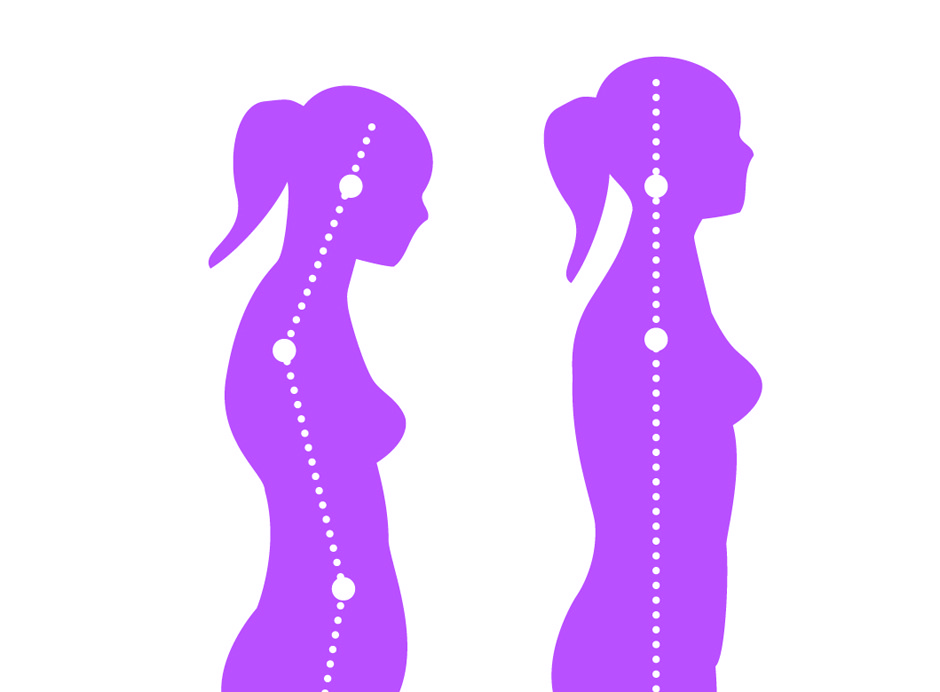
Your posture is everything, people. This is honestly the main way to prevent DA from every happening. Be careful with how you get out of bed in the morning. Instead of sitting straight up, try rolling to your side. When working out, be sure to use good form and to not do the moves carelessly. Speaking of working out, avoid any abdominal exercises that will put extra pressure on your abs as this is a one-way ticket to getting DA. When carrying your kids, be very careful with how you do it. Same goes with lifting heavy objects-use your legs and not your core to lift! Good posture is essential for core activation – if your posture is slumped your core abdominal muscles won’t work as well. Sitting tall with your chest lifted, spine tall and normal inward curve in your low back is the best position for core activation.
Preventing Diastasis Recti During Pregnancy
I recently wrote a super detailed blog post on how to prevent DA from occuring during pregnancy. Most cases of DR actually happens during pregnancy, but goes unnoticed until after you give birth and you are left with this nice, pretty tummy pooch. You can read my blog post here on preventing DA during pregnancy.
If you liked this and would like more exercises to close the gap, check out my 12 Week Diastasis Recti Workout Guide. In this guide, you will have 4 exercises per day that only take 12 minutes! Cardio and sretch routines are included. All workouts are brown down into levels so you can go at the right pace.
To check out my Diastasis Recti Workout Guide, click here!

Your trainer and friend,






